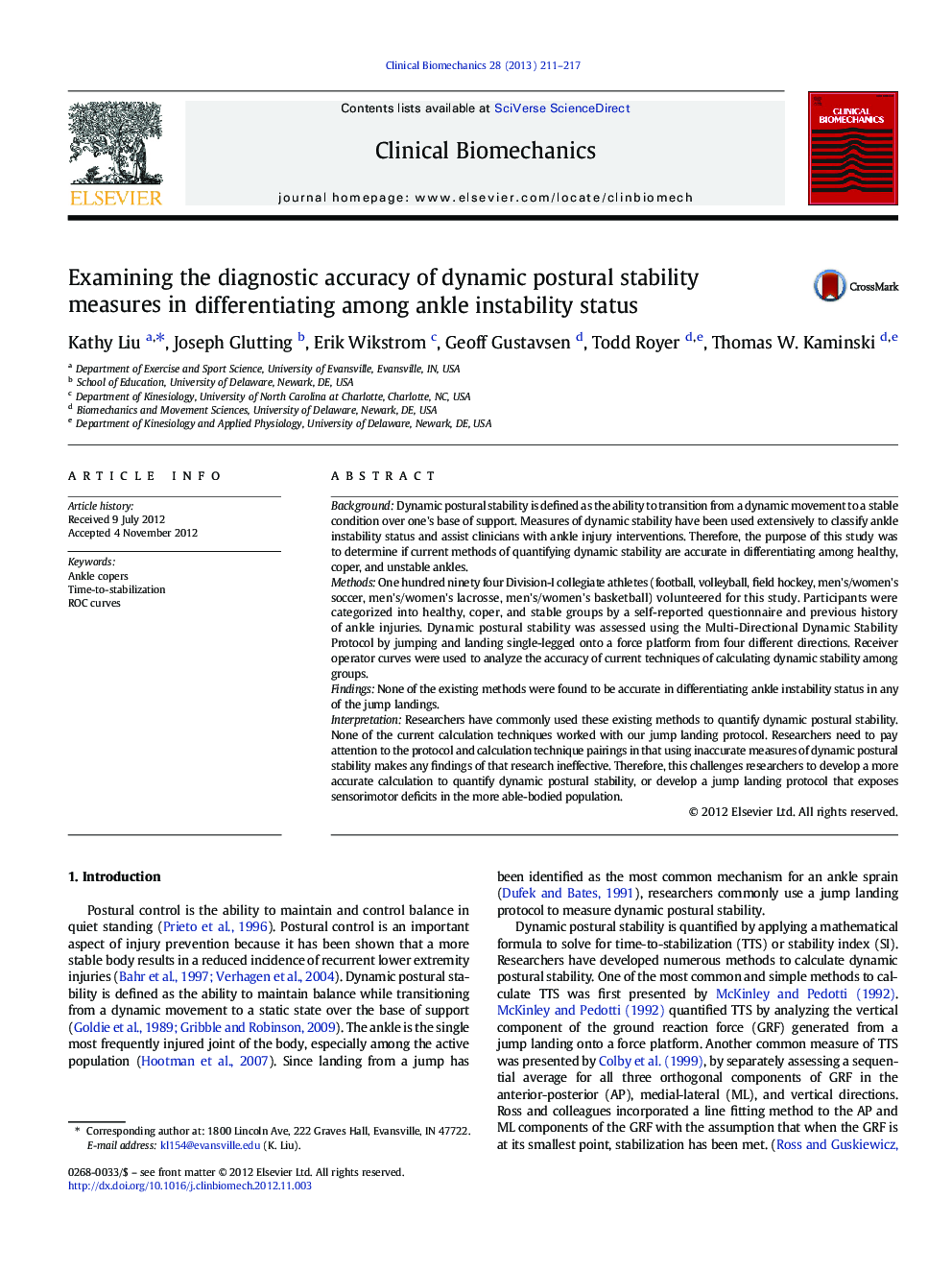| Article ID | Journal | Published Year | Pages | File Type |
|---|---|---|---|---|
| 6205066 | Clinical Biomechanics | 2013 | 7 Pages |
BackgroundDynamic postural stability is defined as the ability to transition from a dynamic movement to a stable condition over one's base of support. Measures of dynamic stability have been used extensively to classify ankle instability status and assist clinicians with ankle injury interventions. Therefore, the purpose of this study was to determine if current methods of quantifying dynamic stability are accurate in differentiating among healthy, coper, and unstable ankles.MethodsOne hundred ninety four Division-I collegiate athletes (football, volleyball, field hockey, men's/women's soccer, men's/women's lacrosse, men's/women's basketball) volunteered for this study. Participants were categorized into healthy, coper, and stable groups by a self-reported questionnaire and previous history of ankle injuries. Dynamic postural stability was assessed using the Multi-Directional Dynamic Stability Protocol by jumping and landing single-legged onto a force platform from four different directions. Receiver operator curves were used to analyze the accuracy of current techniques of calculating dynamic stability among groups.FindingsNone of the existing methods were found to be accurate in differentiating ankle instability status in any of the jump landings.InterpretationResearchers have commonly used these existing methods to quantify dynamic postural stability. None of the current calculation techniques worked with our jump landing protocol. Researchers need to pay attention to the protocol and calculation technique pairings in that using inaccurate measures of dynamic postural stability makes any findings of that research ineffective. Therefore, this challenges researchers to develop a more accurate calculation to quantify dynamic postural stability, or develop a jump landing protocol that exposes sensorimotor deficits in the more able-bodied population.
